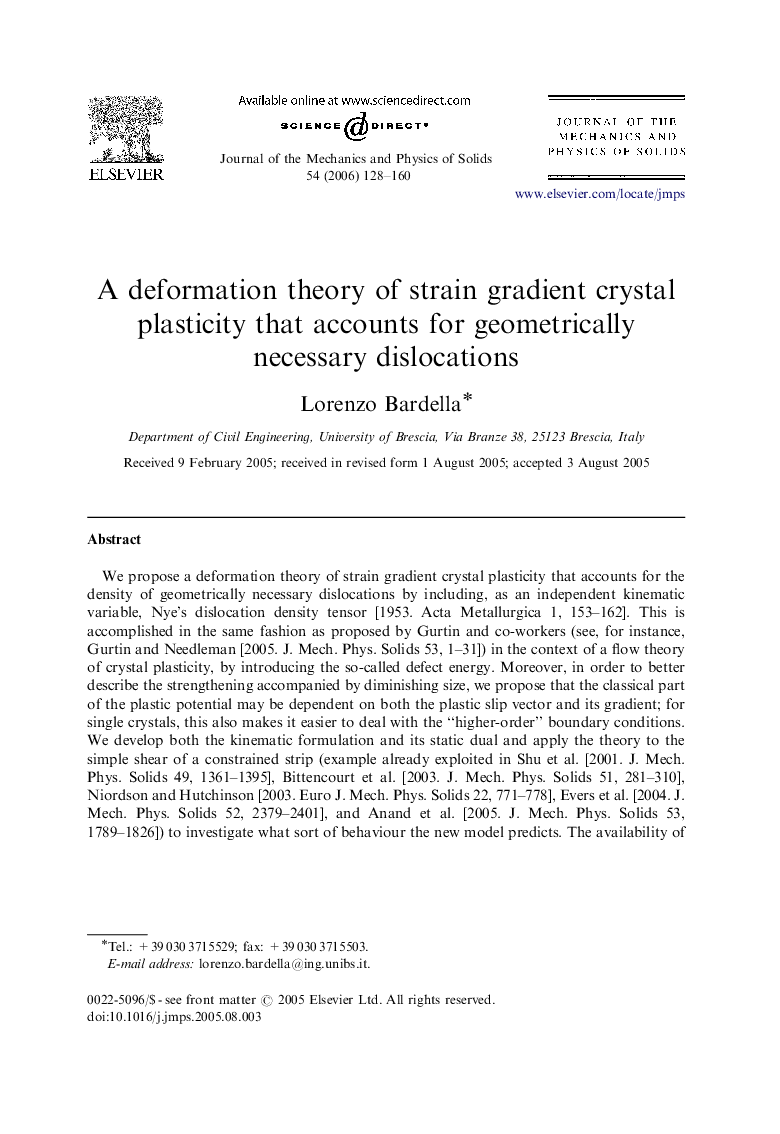| Article ID | Journal | Published Year | Pages | File Type |
|---|---|---|---|---|
| 797582 | Journal of the Mechanics and Physics of Solids | 2006 | 33 Pages |
We propose a deformation theory of strain gradient crystal plasticity that accounts for the density of geometrically necessary dislocations by including, as an independent kinematic variable, Nye's dislocation density tensor [1953. Acta Metallurgica 1, 153–162]. This is accomplished in the same fashion as proposed by Gurtin and co-workers (see, for instance, Gurtin and Needleman [2005. J. Mech. Phys. Solids 53, 1–31]) in the context of a flow theory of crystal plasticity, by introducing the so-called defect energy. Moreover, in order to better describe the strengthening accompanied by diminishing size, we propose that the classical part of the plastic potential may be dependent on both the plastic slip vector and its gradient; for single crystals, this also makes it easier to deal with the “higher-order” boundary conditions. We develop both the kinematic formulation and its static dual and apply the theory to the simple shear of a constrained strip (example already exploited in Shu et al. [2001. J. Mech. Phys. Solids 49, 1361–1395], Bittencourt et al. [2003. J. Mech. Phys. Solids 51, 281–310], Niordson and Hutchinson [2003. Euro J. Mech. Phys. Solids 22, 771–778], Evers et al. [2004. J. Mech. Phys. Solids 52, 2379–2401], and Anand et al. [2005. J. Mech. Phys. Solids 53, 1789–1826]) to investigate what sort of behaviour the new model predicts. The availability of the total potential energy functional and its static dual allows us to easily solve this simple boundary value problem by resorting to the Ritz method.
